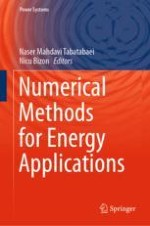2021 | OriginalPaper | Buchkapitel
Design and Finite Element Analysis of Permanent Magnet Synchronous Generator for Wind Turbine Application
verfasst von : Abdurrahman Yavuzdeger, Burak Esenboga, Firat Ekinci, Tugce Demirdelen
Erschienen in: Numerical Methods for Energy Applications
Aktivieren Sie unsere intelligente Suche, um passende Fachinhalte oder Patente zu finden.
Wählen Sie Textabschnitte aus um mit Künstlicher Intelligenz passenden Patente zu finden. powered by
Markieren Sie Textabschnitte, um KI-gestützt weitere passende Inhalte zu finden. powered by
